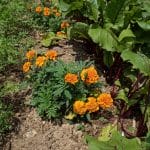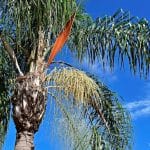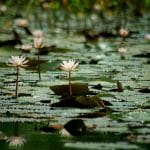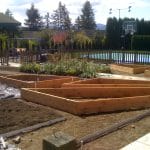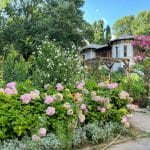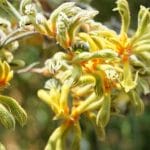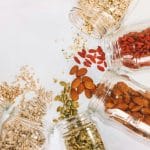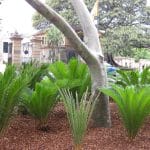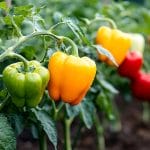Your Garden’s Eco System
Eco Systems In The Garden
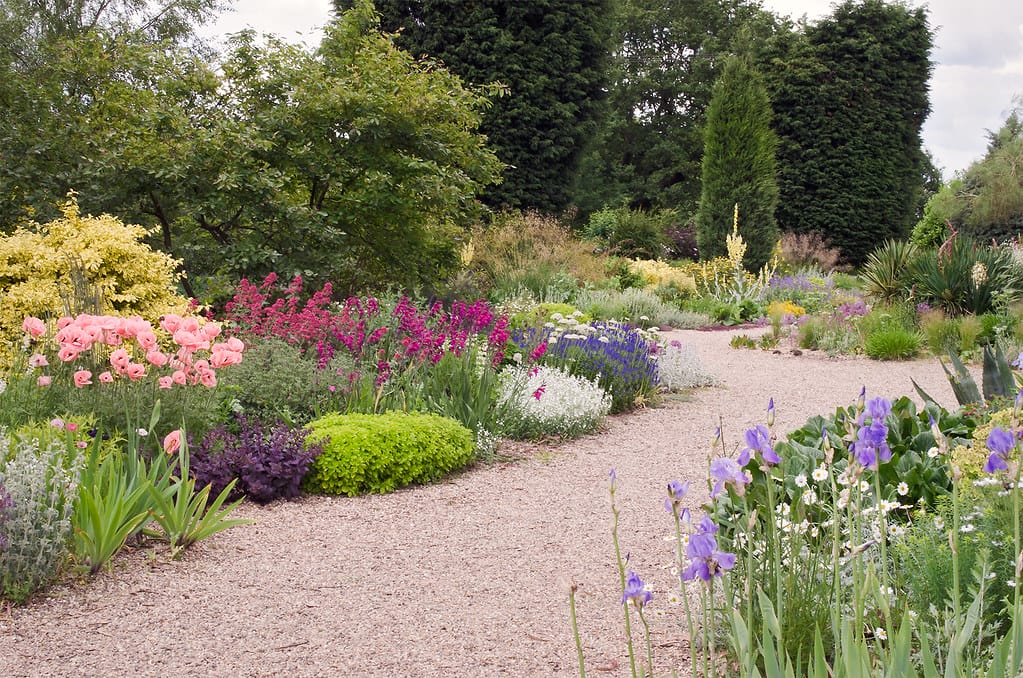
A real gardener’s take on how soil, sun, bugs, birds, and everything in between keeps your garden alive — or doesn’t.
There’s a moment in every growing season where I look around the yard and realize I’m not in charge.
Sure, I planted the tomatoes and mulched the beds and turned the compost pile until my shoulder popped. But the garden? It’s doing its own thing. Worms are working. Bees are buzzing. The fig tree’s throwing shade where I didn’t plan for it, and the birds have moved into the trellis again.
That’s when it hits me: the garden is an ecosystem. I’m not the boss — I’m just part of the crew.
What makes a garden ecosystem?
A garden ecosystem is the full mix of life and conditions that keeps your garden thriving — or struggling. It’s not just plants in rows. It’s:
- Soil and what’s living in it
- Sun and shade and how they shift
- Pollinators, pests, and predators
- Microclimates you didn’t know you had
- And yes, your habits — composting, watering, pruning, spacing
Each piece affects the others. When it’s balanced, everything grows better with less work. When it’s out of whack, nothing seems to grow right.
Let’s break it down from the ground up.
What makes soil healthy?
Healthy soil is the #1 predictor of garden success. You can have full sun, the best heirloom seeds, and a great plan — but if the soil’s off, the plants won’t thrive.
I used to think I had good soil because it wasn’t clay and it didn’t smell bad. Then I tried growing carrots in it. Bent. Forked. Stunted. I dug deeper (literally and figuratively).
Here’s what healthy garden soil usually has:
- Crumbly texture, not compact
- Earthy smell — like fresh forest after rain
- Earthworms and other life visible when you dig
- Organic matter (compost, rotted leaves, worm castings)
- Good drainage but still holds moisture
How to improve soil naturally:
- Add compost every season — not just when planting
- Mulch with leaves, straw, or wood chips
- Stop tilling if you can help it (it breaks up fungal networks)
- Use kitchen scraps in a trench if composting isn’t your thing yet
- Rotate crops and avoid monoculture
My garden changed when I stopped thinking of soil as dirt and started thinking of it as the engine room.
Why is wildlife important in a garden?
It’s easy to think of bugs as pests and birds as seed thieves. I’ve been there. I used to go on aphid patrol like it was a war.
But most bugs aren’t bad. Some are essential.
Beneficial insects, like ladybugs, lacewings, parasitic wasps, and ground beetles, help keep pest populations under control. Same goes for spiders and frogs. Snakes, if you can tolerate them, are rodent bouncers. I’ve even had garter snakes patrol the bean patch.
Birds? They’re not just there to steal your berries (though they will). They eat caterpillars, beetles, and other plant-chompers. Chickadees alone can clear hundreds of pests a day during nesting season.
If you want a self-regulating garden, you have to invite the right guests.
How to attract beneficial insects to a garden:
- Plant flowers like yarrow, borage, dill, calendula, nasturtiums
- Provide water (even a saucer with pebbles works)
- Avoid pesticides — even “organic” ones can mess with the balance
- Let herbs flower — parsley and cilantro in bloom bring in hoverflies
- Leave a patch or two a little wild
It won’t all fall into place overnight, but if you stop fighting the ecosystem, it’ll start helping you.
Do trees and shrubs help or hurt?
Both. Depends on where they’re planted and how you use them. Once I realized I was getting afternoon shade from the neighbor’s maple, I stopped trying to grow tomatoes in that corner. Swapped them out for mint and parsley. Problem solved.
Trees and shrubs in a garden ecosystem can:
- Cast needed shade for heat-sensitive crops
- Slow wind and reduce evaporation
- Provide mulch with leaf drop
- Feed pollinators when they flower
- Offer homes for birds, bugs, and fungi
I’ve planted rosemary and lavender in full sun along a path where nothing else thrived — now it buzzes with bees every summer. I didn’t do that for the bees originally, but I’m glad they showed up.
Tip: If you’re planning new trees, go native when you can. They play better with local bugs and birds.
How does sunlight and shade affect plants?
Light is everything. Plants eat sunlight. But not all plants want the same portion.
Early on, I thought more sun meant better crops. And for tomatoes, squash, peppers? That’s mostly true. But lettuce bolts. Cilantro wilts. Spinach just sighs and gives up.
Knowing your sun patterns means knowing your microclimates.
Common sun/shade needs:
| Plant Type | Light Requirement |
|---|---|
| Tomatoes/Peppers | Full sun (6–8+ hrs) |
| Leafy Greens | Part sun (4–6 hrs) |
| Herbs | Mixed (depends on type) |
| Lettuce/Cilantro | Shade in hot weather |
| Beans | Prefer sun, tolerate light shade |
Observe your garden morning, noon, and late afternoon. Take notes. I even drew a rough map once and marked the hours of light. It wasn’t pretty, but it helped.
What is a microclimate and why does it matter?
A microclimate is a small area with different conditions than the surrounding space. It might be warmer, shadier, windier, or wetter.
In my yard:
- The west fence line heats up fast — good for peppers
- The bed near the fig tree stays damp longer — lettuce paradise
- The area by the compost pile stays warm late into fall
- That one awkward corner by the shed? Always dry. I threw rosemary there and walked away. It thrives.
Understanding microclimates is like unlocking bonus zones in your own yard. Plant accordingly, and everything grows better.
Should I plant flowers in the vegetable garden?
Short answer: yes. Long answer: yes, and here’s why.
Flowers attract pollinators. Without bees, butterflies, and hoverflies, your squash won’t get pollinated. Tomatoes won’t fruit well. Beans might drop their blossoms.
Some flowers deter pests. Nasturtiums can distract aphids. Marigolds suppress nematodes. Calendula brings in ladybugs.
Flowers make your garden more beautiful. And honestly, that matters. A place that brings you joy gets more attention. More attention = better results.
I mix them right in with the veggies now. No separate bed. Just a happy jumble.
How do your habits shape the ecosystem?
Everything you do (or don’t do) ripples through the system. I didn’t realize how much my own habits were disrupting things until I stepped back.
Things I used to do that backfired:
- Overwatering → fungus gnats and soggy roots
- Ripping out bolted herbs → lost my pollinator buffet
- Spraying aphids → killed the ladybugs that would’ve helped
- Leaving bare soil → weeds galore and dried-out beds
Now I compost more, mulch everything, and let some things go wild on purpose. I plant extra parsley just so I can let one bolt.
The more I observe and adapt, the less I feel like I’m forcing things.
Real-Life Ecosystem in Action
Right now, here’s what’s happening in my garden:
- Bees are on the blooming borage and bolted arugula
- Birds are picking through the strawberries (okay, that one’s a draw)
- A frog lives under the cucumber trellis
- The shady side bed is full of self-seeded dill and chard
- I haven’t sprayed anything in over four seasons
- The soil smells like cocoa and falls apart in my hand
It’s not manicured. It’s not Instagram-ready. But it’s alive. And that’s the kind of garden I want to be in.
Simple Starting Points
If you’re just starting to think about your garden as an ecosystem, try this:
- Add compost or worm castings — skip the bagged stuff for now
- Mulch with leaves or straw instead of leaving soil bare
- Plant flowers — calendula, nasturtiums, borage, anything easy
- Stop spraying, even the organic stuff, and observe instead
- Let herbs bloom — bees will thank you
- Pay attention to light and shadow patterns
The garden will teach you the rest.
FAQ: Garden Ecosystem Questions
Q: What is a garden ecosystem?
A: It’s the whole system working together—soil, bugs, roots, birds, weather, and you. Not just plants in rows.
Q: How do I attract beneficial bugs to my garden?
A: Plant flowers, skip the sprays, leave a water dish out. They’ll find you if the space is welcoming.
Q: Does shade help or hurt my garden?
A: Depends on what you’re growing. Lettuce loves a little shade. Tomatoes don’t. Use shade to your advantage.
Q: Should I plant flowers with vegetables?
A: Yep. Some help with pollination, some deter pests, and some just make the space feel alive.
Q: What’s the most important part of the garden ecosystem?
A: The soil. If the soil’s not right, nothing else matters much.
Share this post
Table of Contents
- What makes a garden ecosystem?
- What makes soil healthy?
- How to improve soil naturally:
- Why is wildlife important in a garden?
- How to attract beneficial insects to a garden:
- Do trees and shrubs help or hurt?
- How does sunlight and shade affect plants?
- Common sun/shade needs:
- What is a microclimate and why does it matter?
- Should I plant flowers in the vegetable garden?
- How do your habits shape the ecosystem?
- Real-Life Ecosystem in Action
- Simple Starting Points
- FAQ: Garden Ecosystem Questions
All categories
More From The Garden
Disclosure: This post may contain affiliate links. That means if you click and buy, The Bright Garden may earn a small commission, at no extra cost to you. We only recommend products we’ve vetted and believe will benefit our readers.


